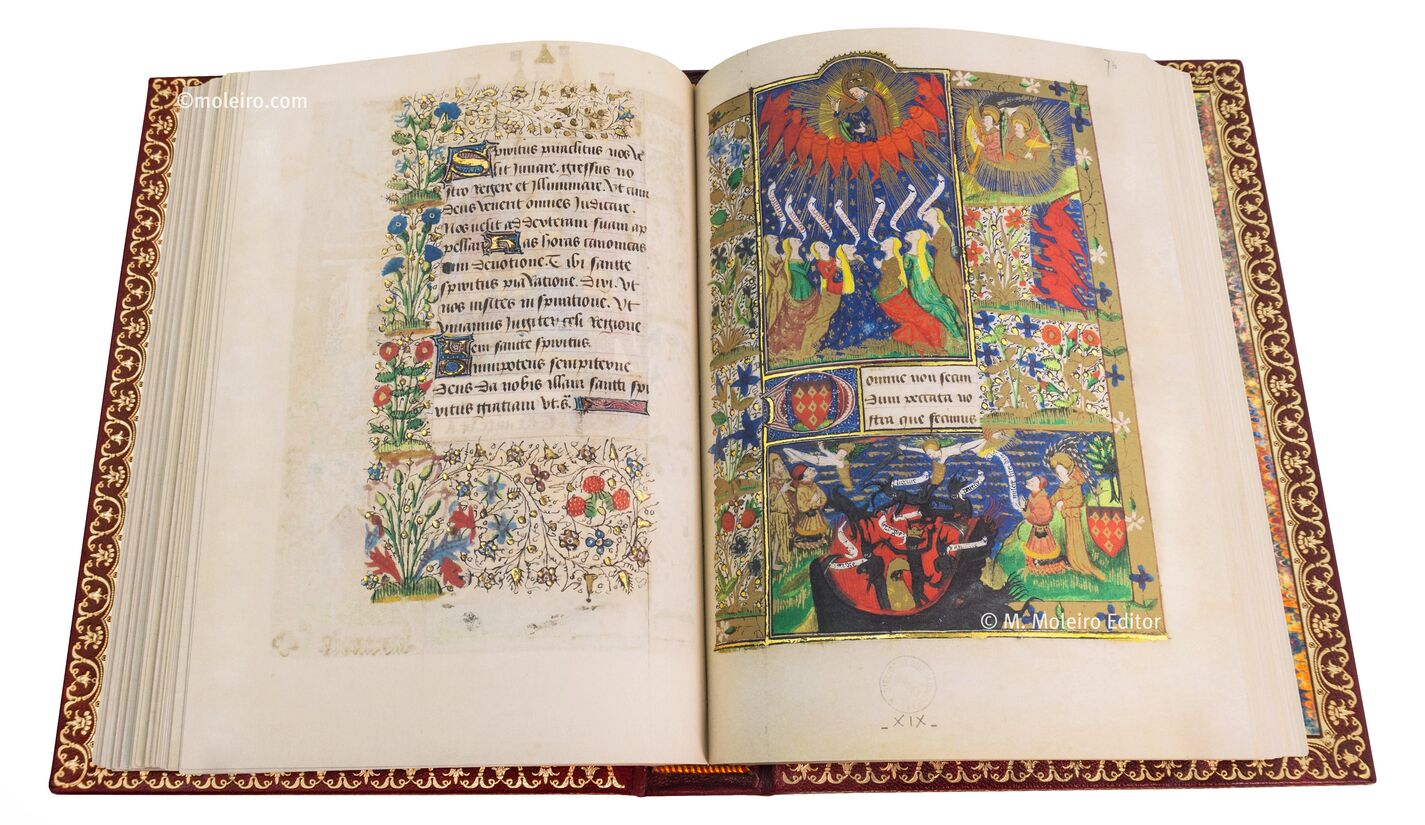
The page presents us with scenes that are so original and unusual that they are difficult to interpret. Put briefly, it is dedicated to the seven virtues and seven vices, or cardinal sins, in other words to the respective views of sanctity and sin, of salvation and damnation.
Above, the source of rays of light in all directions against the background of a starry sky, is God the Father with halo, wearing his triple crown, and carrying the globe of the world, surrounded by an aureole, and adored by a dozen seraphim. He is blessing seven young women with long hair, and therefore virgins, who are kneeling while turning towards him, each with a scroll above bearing her designated name. They represent respectively on the right the three theological virtues (faith, hope, and charity) and on the left the four cardinal virtues (justice, prudence, temperance, and fortitude). Two angel musicians, a harpist and a violinist, are pictured above, taking part in this scene, and below three other seraphim are contemplating it.
Within the capital D of the prayer of Ash Wednesday, beginning with Domine, non secundum peccata nostra fecimus nos ('Lord, do not deal with us according to our sins', Psalm 102:10) is the coat of arms with seven gold lozenges on a red field, which we meet many times, the crest and insignia of the Montauban family.
Below is the huge and terrifying flame-filled gullet of the Devil, that of Hades, or of Hell, whatever one calls it, in the process of drawing in and/or swallowing seven obscure, black figures, the anthropomorphic symbols of the vices, just as the virtues were symbolised by the charming young maidens. The vices too are identified by scrolls which name them: pride, greed, lust, envy, gluttony, wrath, and sloth. This list owes much to its development by the thirteenth-century Saint Thomas Aquinas in the Prima Secundae of the Summa Theologia, question 84. The subject was to inspire numerous artists of Western Christianity, such as his contemporary, Giotto, who used it in his frescoes in the Scrovegni Chapel in Padua, or as Hieronymus Bosch would later do in his painting of the seven deadly sins and the four last stages of human life, a panel completed towards 1500, now in the Prado in Madrid. In our present folio two angels furnished with swords and carrying shields are helping to throw the vices into the furnace, while two Christians are contributing in their own way, kneeling with clasped hands, one encouraged by a saint standing behind him who is difficult to identify, and the other, on the right, by an angel with, behind him, once again, the coat of arms with seven lozenges.